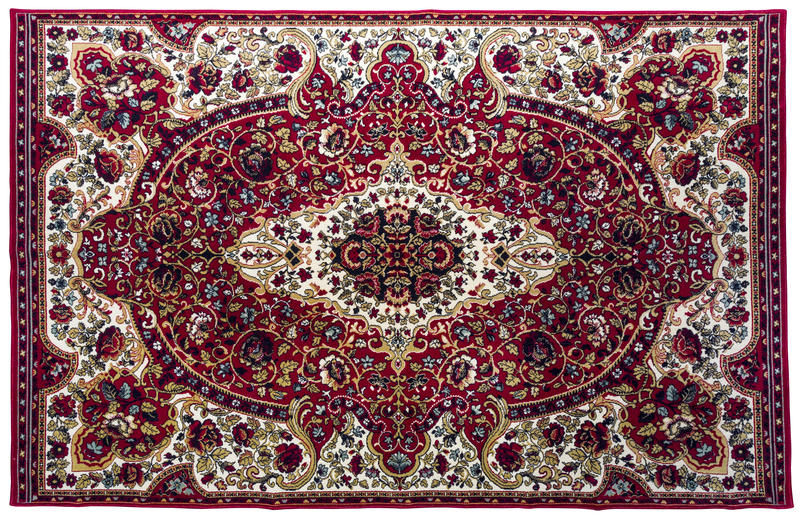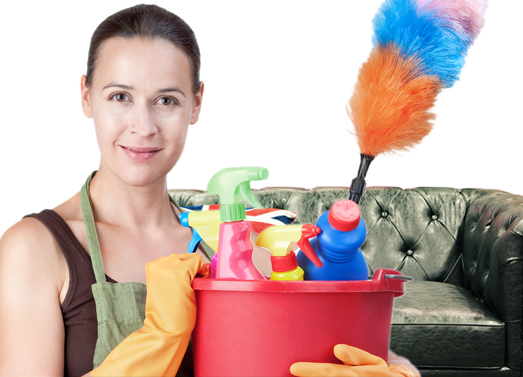Transform Your Sanctuary: Remove Pet Odor
Posted on 15/09/2025
Transform Your Sanctuary: Remove Pet Odor for a Fresher Home
We all adore our furry companions--they provide unconditional love and joyful companionship. However, one challenge many pet owners face is maintaining a home that smells clean and welcoming, free from persistent pet odors. If you've struggled to remove pet odor, you're not alone. Pet odor can stubbornly cling to fabrics, carpets, furniture, and even the air, making it essential to use the right methods for odor elimination. This guide covers everything you need to know to transform your sanctuary into a blissful, fresh-smelling haven.

Understanding the Source of Pet Odors
Before tackling the challenge of pet odor removal, it's important to understand why these smells linger. Here are the common sources of pet odors:
- Accidents: Urine and feces can leave behind strong, lingering scents.
- Saliva: Drool marks on furniture, floors, and toys can develop into smelly spots.
- Pet Dander: Skin flakes trap odors and can circulate through the air and HVAC systems.
- Natural Oils: Pets' skin releases oils, which can be absorbed by fabrics and carpet fibers.
- Wet Fur: That classic "wet dog smell" is actually bacteria thriving on damp hair and skin.
Identifying the exact source of the odor is the first step in comprehensive pet smell removal.
Step-by-Step Guide: How to Remove Pet Odor Effectively
1. Deep-Clean All Soft Surfaces
Soft surfaces like carpets, rugs, upholstered furniture, curtains, and pet beds often absorb the brunt of pet odors. Here's a comprehensive cleaning plan:
- Vacuum Thoroughly: Use a vacuum cleaner with a HEPA filter to trap dander and hair. Vacuum all surfaces--don't forget under furniture and hard-to-reach areas.
- Steam Clean Carpets and Upholstery: Rent or purchase a steam cleaner, or hire a professional carpet cleaner. Steam penetrates deep into fibers, removing odors at the source.
- Launder Removable Fabrics: Wash cushion covers, curtains, blankets, and pet bedding in hot water with an enzymatic detergent designed for pet odors.
- Use Baking Soda: Sprinkle baking soda generously on carpets and let it sit for at least 30 minutes before vacuuming. Baking soda is renowned for its odor-neutralizing abilities.
2. Target Pet Accidents Immediately
If you want to eliminate pet urine odor, immediate action is key. Follow this process:
- Blot, Don't Rub: Use paper towels or a cloth to blot up as much liquid as possible.
- Apply an Enzymatic Cleaner: These cleaners break down the proteins in urine and feces, eliminating, not just masking, the odor.
- Rinse and Dry: Once the cleaner has done its job, rinse the area with water and blot dry again.
Note: Avoid using ammonia-based cleaners, as these can actually attract pets back to the same spot.
3. Eliminate Pet Odor from Hard Floors
Don't overlook hard flooring! Pet mistakes on tile, wood, or laminate can seep into cracks and grout. Here's how to tackle them:
- Mop Regularly: Use a pet-safe floor cleaner mixed with white vinegar to neutralize odors.
- Scrub Grout: Mix baking soda and water into a paste, apply to grout, scrub, and rinse.
4. Purify the Air
Sometimes, pet odors linger in the air. To ensure your entire home smells fresh:
- Use Air Purifiers: HEPA and carbon filter air purifiers capture dander and neutralize smells.
- Open Windows: Fresh air is a natural way to ventilate and disperse stubborn odors.
- Simmer Natural Scents: Boil water with citrus peels, cloves, or cinnamon sticks to create a pleasant atmosphere.
- Houseplants: Certain indoor plants, like spider plants and peace lilies, help filter indoor air.
5. Treat Pet Toys, Bowls, and Accessories
Don't forget the little things--pet toys, collars, and bowls can all harbor odors:
- Wash Toys: Clean hard toys with soap and water. Toss fabric toys in the washing machine if safe.
- Soak Bowls: Use vinegar or a baking soda solution to soak bowls and rinse thoroughly.
- Launder Collars and Leashes: Hand-wash or machine-wash, depending on the material.
6. Keep Litter Boxes and Cages Clean
For cat owners and small animal enthusiasts, the litter box or cage is a notorious odor hotspot:
- Scoop Daily: Remove waste every day to keep smells at bay.
- Use Odor-Absorbing Litter: Look for litter formulas that trap and neutralize smells.
- Wash Boxes and Cages Weekly: Use hot water and enzymatic cleaner for deep cleaning.
Natural Remedies to Remove Pet Smell
Many pet owners prefer natural solutions for pet odor elimination. These remedies are safe, cost-effective, and usually already in your kitchen:
- Baking Soda: As mentioned earlier, it is a versatile deodorizer for carpets and upholstery.
- White Vinegar: Mix with equal parts water for a powerful odor-neutralizing spray (spot test on fabrics first).
- Lemon Juice: Dilute lemon juice in water for a light, fresh scent and some antibacterial action (use with care on delicate surfaces).
- Activated Charcoal: Place sachets or bowls around your home to absorb odors from the air.
*Always spot test natural cleaners to ensure they don't discolor fabrics or surfaces.*
Preventing Future Pet Odors: Proactive Maintenance
The secret to a fresh-smelling sanctuary is consistency. Here's how to prevent pet odors before they become an issue:
- Regular Grooming: Brush and bathe your pet as recommended by your vet to minimize dander and oils.
- Clean Bedding Frequently: Wash pet bedding once a week to keep it fresh.
- Routine Vet Checkups: Pets with dental problems, ear infections, or skin issues may develop extra odors.
- Establish Bathroom Schedules: Prevent accidents by providing regular access to outdoor areas or cleaning litter boxes promptly.
Tip: Train your pet to relieve themselves in designated spots outdoors to avoid indoor mishaps.
Special Considerations for Different Pets
Dogs:
- Dry off wet dogs thoroughly after walks or baths to prevent "wet dog smell."
- Invest in washable dog beds and launder them regularly.
Cats:
- Scoop litter boxes daily and replace litter every week.
- Trim fur between paw pads to prevent litter tracking.
Small Pets (rabbits, guinea pigs, ferrets):
- Spot-clean cages daily and deep clean weekly.
- Use bedding with good odor control, like paper-based substrates.
Birds:
- Clean bird cages and change liners frequently to prevent build-up of odors.
Products That Help You Remove Pet Odor
The latest pet products are designed to specifically combat pet odors at the source. Here's a list of popular and effective options:
- Enzymatic Cleaners: These break down organic matter (urine, feces, vomit), leaving no scent behind.
- HEPA Air Purifiers: Remove dander and pet odors circulating in your home.
- Pet-Safe Deodorizers: Sprays and powders formulated for use around animals are safe and quick-acting.
- Odor-Trapping Litter: Clumping & odor-control litter for cats and other small animals reduce smells instantly.
- Washing Additives: Add enzymatic boosters to your laundry when washing pet bedding or fabrics.
Choose products labeled as safe for pets and always follow usage instructions to protect your furry friends.
Common Mistakes to Avoid When Trying to Remove Pet Odor
Even well-intentioned pet owners sometimes make mistakes that worsen the problem. Avoid these pitfalls for optimal results:
- Masking Instead of Eliminating: Air fresheners may just cover up smells instead of removing them.
- Using Inappropriate Cleaners: Some cleaners react with pet urine and make odors worse or attract pets to soiled areas.
- Waiting Too Long: The longer an accident sits, the harder it is to remove the odor.
- Neglecting the Air: Focusing only on surfaces and ignoring ambient air can leave lingering smells.

When to Call a Professional
If you've tried everything and still can't rid your home of pet odor, it might be time to seek professional help. Here's when to consider it:
- Stubborn Carpet Odors: Professional steam cleaning or extraction may be needed.
- Mystery Smells: Pros can identify hidden sources, like odors trapped in wall cavities, under floorboards, or HVAC systems.
- Large-Scale Issues: Rescue homes or multiple pets might necessitate stronger, industrial cleaning solutions.
Professional services can guarantee deep cleaning and often offer odor elimination warranties.
Conclusion: Embrace a Refreshed, Odor-Free Sanctuary
Transforming your home into a sanctuary free from pet odor is entirely possible with the right combination of cleaning strategies, prevention, and care. Remove pet odor by tackling all surfaces, from floors to furnishings, purifying the air, and tending to your beloved pets' hygiene and health. Embrace tried-and-tested routines, invest in the right products, and love both your pet and your sanctuary equally.
Ready to reclaim your space? Start today by following these comprehensive steps to eliminate pet odor and enjoy a home that always smells fresh and welcoming--for both humans and animals alike!





